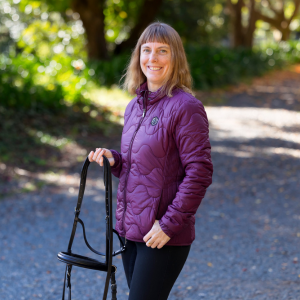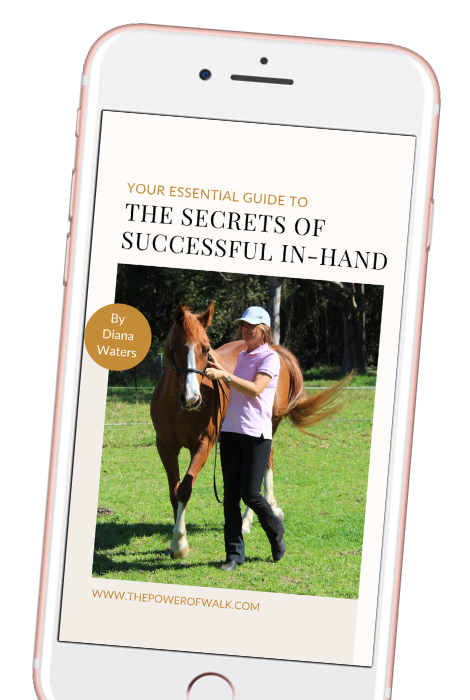Forward: Is it the basis of good training or the result of good training?
A horse that moves freely and enthusiastically forward in balance with controlled power is an absolute pleasure to ride. It is therefore unsurprising that many riders pursue “forward” as not only their primary goal, but the primary method they use to get there.
What is “forward”? I have noticed that those who use “forward” as gospel for their training usually mean “fast”. Fast is usually achieved by pushing or nagging the horse, whether this is with seat, legs or whip, driving from the ground or under saddle. Trying to get the horse to go a bit faster than the pace he or she is naturally choosing. The theory is.. if you drive him forward in a rhythm, this will straighten him, and also he will figure out how to carry himself better, and other problems will resolve themselves. Sometimes, this does indeed result in a kind of loosening, a release as the horse is forced to open the joints to maintain balance at the faster speed, rather like turning on a kinked hose with high enough pressure to push out the kinks. This is the happiest outcome.
Unfortunately, more often, it seems to result in a quickening of the steps and tension in the body accompanied by a pain face, and needing to be pressured to keep moving every step, waiting for the pressure to stop nag, nag, nagging so they can return gratefully to walk.
More concerningly, there is usually a reason why a horse doesn’t naturally choose to move forward. It may be as simple as not yet having discovered how to adapt his balance to carry a rider efficiently, or it may be because he has an injury or stiffness, is very crooked or is in pain. In which case, trying to rehabilitate this horse by driving him more forward is most likely going to exacerbate the issue.
Every horse is born with a desire to move. Horses lose this desire to move through injury, discomfort, poor training (being pushed and pushed for too long) or unbalanced riders bouncing uncomfortably on their backs in ill-fitting saddles.
“I can’t go faster. It hurts/it has caused me pain/discomfort in the past”
“I know the solution. The solution is to go faster – go on, push through it – you can do it! Come on, quickly, now! Don’t stop and think!”
“OK, it hurts but I will try my best”
I’m always talking about the benefits of slow work, so it would be understandable if people might think that I never incorporate fast work into my training. I actually do, and I find it incredibly important. The difference is, I release into fast work. I try not to ever push the horse into it. Fast work is the joy, the play, the expression. The expression in the fast work tells me how the horse is experiencing the session. Have I carefully and methodically unkinked the hose enough that the water can flow freely through?
A horse’s desire and ability to move freely forward and maintain that without having to be kept there by aids applied every stride, is the outcome of good training.
“Can you go faster?”
“No, it hurts/it has caused me pain/discomfort in the past”
“OK. You can choose your speed. As slow as you like.”
“Really? Are you sure?”
“Yes. Just relax, however you like. How does that feel?”
“Different… Relaxing.”
“OK. Can I make a suggestion? How about you bend a little this way?”
“I’m worried it might hurt”
“Take your time. You can pause and work it out. I won’t make you do anything.”
“I can only do this tiny bit”
“Well done and thank you. Have a long rein stretch. Now, can we try that again?”
“That felt easier. Oh my body feels much better. Can we trot?”
“Go for it!”
“Whoopee!!! Canter?”
Since learning French Classical, I reject strong aids, whether they be from hand, legs or seat, or from the ground. The horse not wanting to go forward is information. A horse thinking forward is a horse that does not need to be pushed. A horse that is pushed strongly into a faster speed or gait is not thinking forward, no matter how fast he is moving. A horse being subjected to driving aids, or any aids that are reapplied every step, is not thinking forward and is carrying tension in his body.
If I don’t have forward, it’s not my job to pursue that. My job is to support the horse to straighten and rebalance his crooked, sore body at a slow and gentle speed, yes with short strides at first if that’s easier, so that he has time to experiment and discover what makes his body feel good without experiencing jarring pain every time he gets it wrong, hoping he stumbles upon the right answer (which is what happens if you try and let a horse figure it out at trot) or not having time to process and go against his muscle memory (which is what happens if you push him into a fast walk)
Once I have forward, I can play with slower or faster tempos, and different lengths of stride, using subtle body language. It’s a communication, a suggestion on how to channel the forward, not a motivate, push, nag or insist to “get” or “maintain” the forward.
I incorporate forward in my work in the following ways:
- Long rein walk (not pushed on, but typically the horse will choose a fast, long stepping active walk that swings through the back)
- Ridden: Release to trot/canter (When I feel the horse’s energy rising, I offer the option to trot or canter from a balanced walk)
- In-hand: Trot or canter at liberty or beside me on a long rein (breaks during in-hand work when I feel the energy rising as a result of the slow work)
- Ridden: Release up the grassy hill after a schooling session. (Anything goes – sometimes he walks or trots, sometimes balanced canter, or flat out gallop!)
I don’t incorporate “forward” by pushing or dictating a faster speed or longer strides. It always has to feel like an “allow” or a “release”
Video: Comparison of canters: Vikingur, the very first time I rode him and a few months later after mostly walk work, in-hand and ridden, one of the very first times I cantered him at home. I paused the videos at the same phase of the canter to show the difference in his posture and how this has contributed to the change in the canter. You can clearly see the crookedness in the earlier video, which was resolved using slow walk work. He was never ridden more forward, only slowed down, and yet you can see how he moves faster and with more freedom – and maintains the gait for much longer and with ease.



